Share your results
Please enter your email
Results shared!
We've sent a link to your email so you can access your results at any time.
You can make dancing part of your healthy ageing journey.
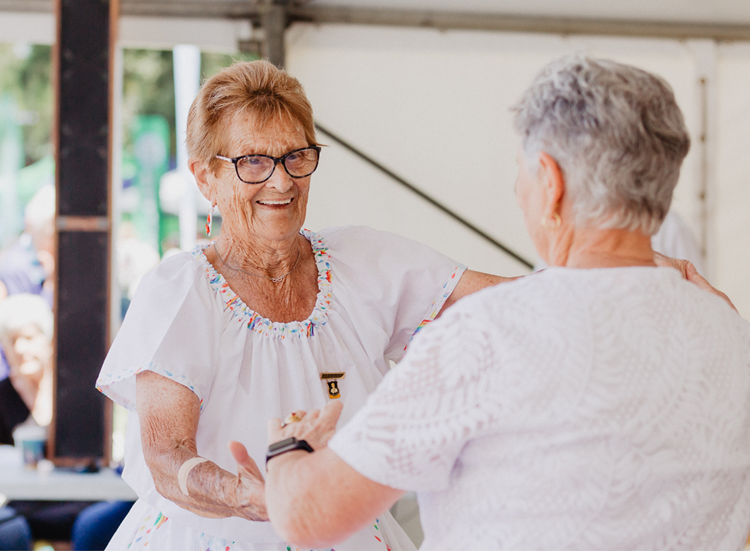
Did you know the following fun facts?
Well, there's a fun activity that can give you all these perks and more. Dancing has all the physical benefits of sport, along with the cognitive benefits of art. Plus, the social and emotional benefits of both.
And it's been around a long time. Dancing figures can even be seen on rock paintings from the Palaeolithic period. So why not make this ancient cultural phenomenon part of your healthy ageing journey?
Did you know the following fun facts?
Well, there's a fun activity that can give you all these perks and more. Dancing has all the physical benefits of sport, along with the cognitive benefits of art. Plus, the social and emotional benefits of both.
And it's been around a long time. Dancing figures can even be seen on rock paintings from the Palaeolithic period. So why not make this ancient cultural phenomenon part of your healthy ageing journey?
Read less...
Regular exercise has huge health benefits, especially as you age. The Department of Health recommends you do 30 minutes of moderate-intensity exercise on most days. Conveniently, dance is a kind of exercise that can be as gentle or intense as you need it to be.
Keeping active can help with the prevention and management of many chronic conditions. Including type 2 diabetes, high blood pressure, osteoarthritis, and osteoporosis.
Dance, in particular, can be helpful to people with arthritis. Flowing rhythmic movements promote joint mobility and increased function. Evidence also suggests dance can reverse damage from osteoporosis and rebuild bone density.
Regular exercise has huge health benefits, especially as you age. The Department of Health recommends you do 30 minutes of moderate-intensity exercise on most days. Conveniently, dance is a kind of exercise that can be as gentle or intense as you need it to be.
Keeping active can help with the prevention and management of many chronic conditions. Including type 2 diabetes, high blood pressure, osteoarthritis, and osteoporosis.
Dance, in particular, can be helpful to people with arthritis. Flowing rhythmic movements promote joint mobility and increased function. Evidence also suggests dance can reverse damage from osteoporosis and rebuild bone density.
Read less...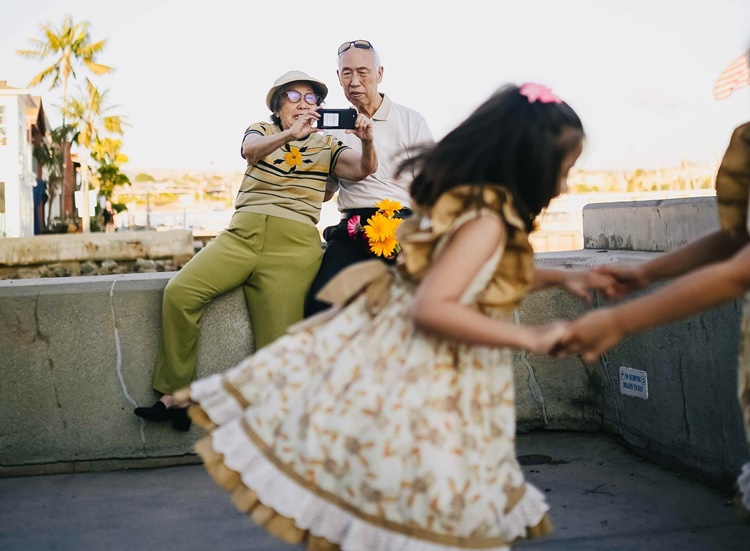
Dance is great for aerobic fitness, endurance, and weight loss. This helps keep your heart working well. In fact, people who engage in moderate-intensity dancing have been found less likely to develop heart disease.
It also improves balance, coordination, and reaction time. And it builds up your strength and flexibility, as well as your bone and joint health. All this together has the added benefit of lowering your risk of getting injured in a fall.
As a matter of fact, one of the first measures you can take for falls prevention is to improve your balance by moving as much as you can, however you can. And dance can make moving easy to do, because of the fun factor.
Dance is great for aerobic fitness, endurance, and weight loss. This helps keep your heart working well. In fact, people who engage in moderate-intensity dancing have been found less likely to develop heart disease.
It also improves balance, coordination, and reaction time. And it builds up your strength and flexibility, as well as your bone and joint health. All this together has the added benefit of lowering your risk of getting injured in a fall.
As a matter of fact, one of the first measures you can take for falls prevention is to improve your balance by moving as much as you can, however you can. And dance can make moving easy to do, because of the fun factor.
Read less...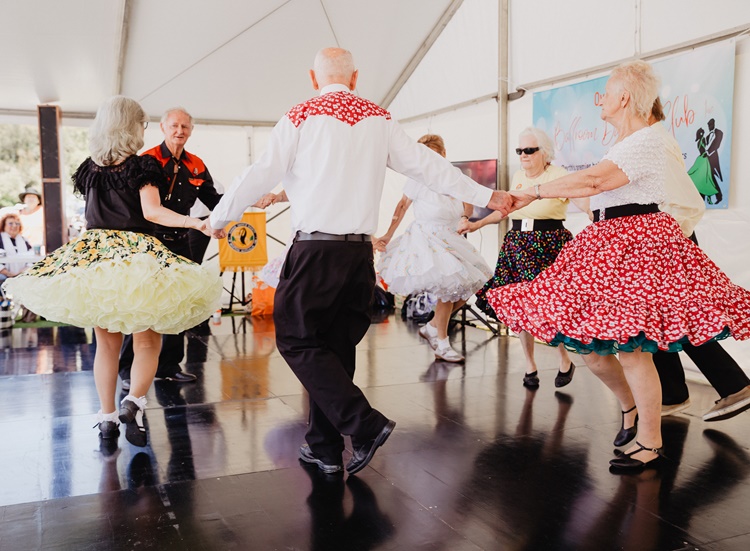
Dancing is scientifically confirmed to be fun. The happiness hormones (dopamine, serotonin, oxytocin, and endorphins) are all increased by dance.
Dancing is also shown to decrease levels of cortisol from stress, which is better for you than you may realise. Did you know that stress impedes your immune system? Well, positive emotions seem to boost your immune system.
Experiencing positive emotions is associated with healthier levels of cytokines, indicating a happier immune system. And you'll likely experience positive emotions when listening to music. Especially if it's so good it inspires you to dance. Enjoying things deeply is just a healthy pastime.
Dancing is scientifically confirmed to be fun. The happiness hormones (dopamine, serotonin, oxytocin, and endorphins) are all increased by dance.
Dancing is also shown to decrease levels of cortisol from stress, which is better for you than you may realise. Did you know that stress impedes your immune system? Well, positive emotions seem to boost your immune system.
Experiencing positive emotions is associated with healthier levels of cytokines, indicating a happier immune system. And you'll likely experience positive emotions when listening to music. Especially if it's so good it inspires you to dance. Enjoying things deeply is just a healthy pastime.
Read less...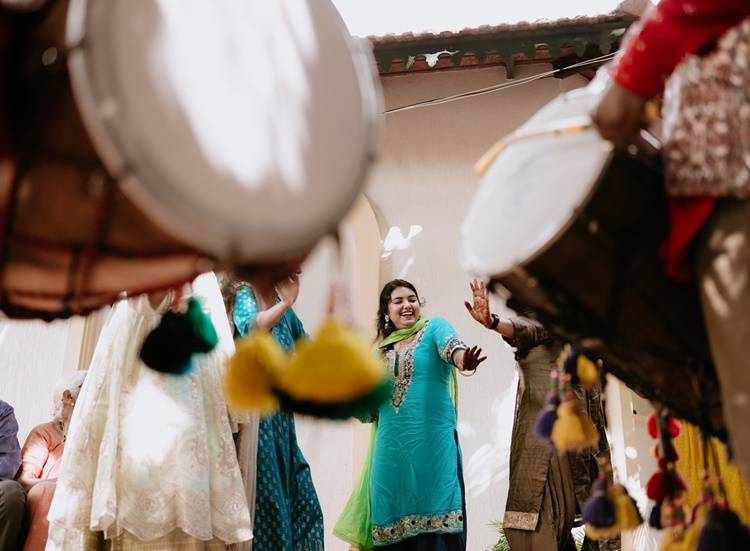
Dance exists in varied and ancient traditions all over the world. And many different styles have great cultural significance. This supports a sense of belonging and identity.
It's also a social sport. So, it helps you stay connected with your community and builds your social skills. Partnered dancing, such as ballroom dancing, can even increase your empathy. It involves motor imitation and artistic training, which play big parts in empathic ability.
The artistic aspect means dance can be used for emotional communication. And exploring or expressing your feelings can alleviate depression and anxiety. It can give you catharsis, a release of negative emotions.
Dance exists in varied and ancient traditions all over the world. And many different styles have great cultural significance. This supports a sense of belonging and identity.
It's also a social sport. So, it helps you stay connected with your community and builds your social skills. Partnered dancing, such as ballroom dancing, can even increase your empathy. It involves motor imitation and artistic training, which play big parts in empathic ability.
The artistic aspect means dance can be used for emotional communication. And exploring or expressing your feelings can alleviate depression and anxiety. It can give you catharsis, a release of negative emotions.
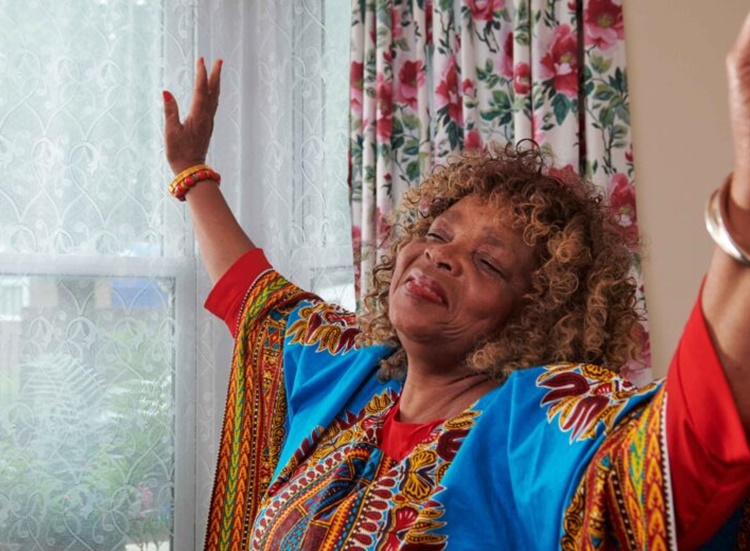
Using your brain as much as possible helps you build a reserve of thinking ability. This makes you more resilient to age-related changes. It's never too late to start building this reserve, and it might surprise you what activities are good for it. Creative activities like reading and painting, for example, generate lots of neural activity.
Research supports that dance also builds cognitive reserve. In fact, aerobic dancing was found to effectively improve memory in older adults during the pandemic. After all, dancing engages many brain functions at once. Kinaesthetic, emotional, musical, and more. All this gives your brain a great workout.
Using your brain as much as possible helps you build a reserve of thinking ability. This makes you more resilient to age-related changes. It's never too late to start building this reserve, and it might surprise you what activities are good for it. Creative activities like reading and painting, for example, generate lots of neural activity.
Research supports that dance also builds cognitive reserve. In fact, aerobic dancing was found to effectively improve memory in older adults during the pandemic. After all, dancing engages many brain functions at once. Kinaesthetic, emotional, musical, and more. All this gives your brain a great workout.
Read less...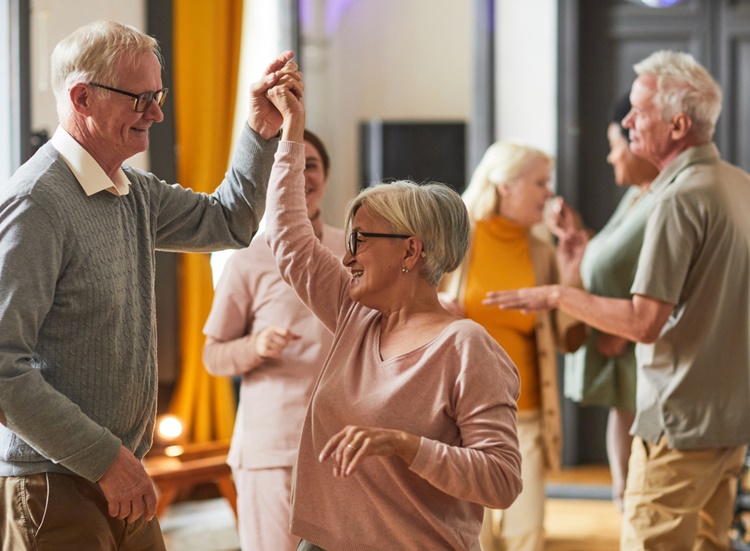
The best brain exercise you can do is to keep learning new things. And do things that require rapid decision making and creative problem solving.
Learning a new style of dance is great for your brain, especially if it involves some freestyling. The freestyle aspect will force you to improvise and make split-second decisions as you move. Challenging yourself like this also promotes a healthy mindset of lifelong learning.
Pro tip: Following a dance partner's lead is a fabulous challenge for your brain. You're reading, predicting, and responding to your partner's actions. (Powers 2010.) This only adds to all the other things your brain is doing to keep you grooving on the dancefloor.
The best brain exercise you can do is to keep learning new things. And do things that require rapid decision making and creative problem solving.
Learning a new style of dance is great for your brain, especially if it involves some freestyling. The freestyle aspect will force you to improvise and make split-second decisions as you move. Challenging yourself like this also promotes a healthy mindset of lifelong learning.
Pro tip: Following a dance partner's lead is a fabulous challenge for your brain. You're reading, predicting, and responding to your partner's actions. (Powers 2010.) This only adds to all the other things your brain is doing to keep you grooving on the dancefloor.

So, what exactly is your brain doing to keep you grooving on the dancefloor? A lot, according to this 2023 literature review.
Dance is a combination of visual and auditory art, with spatial and temporal aspects. Listening to music already engages several motor regions of the brain. When you dance to music, it only gets more complex. Your brain's predictive coding of music now includes auditory, visual, and haptic processes. You process the rhythm, melody, and harmony in a pleasure cycle, causing you to act, feel, and learn.
All this stuff going on at once makes dance good at strengthening the neural pathways in your brain. Increasing functional connectivity and neuroplasticity.
So, what exactly is your brain doing to keep you grooving on the dancefloor? A lot, according to this 2023 literature review.
Dance is a combination of visual and auditory art, with spatial and temporal aspects. Listening to music already engages several motor regions of the brain. When you dance to music, it only gets more complex. Your brain's predictive coding of music now includes auditory, visual, and haptic processes. You process the rhythm, melody, and harmony in a pleasure cycle, causing you to act, feel, and learn.
All this stuff going on at once makes dance good at strengthening the neural pathways in your brain. Increasing functional connectivity and neuroplasticity.
Read less...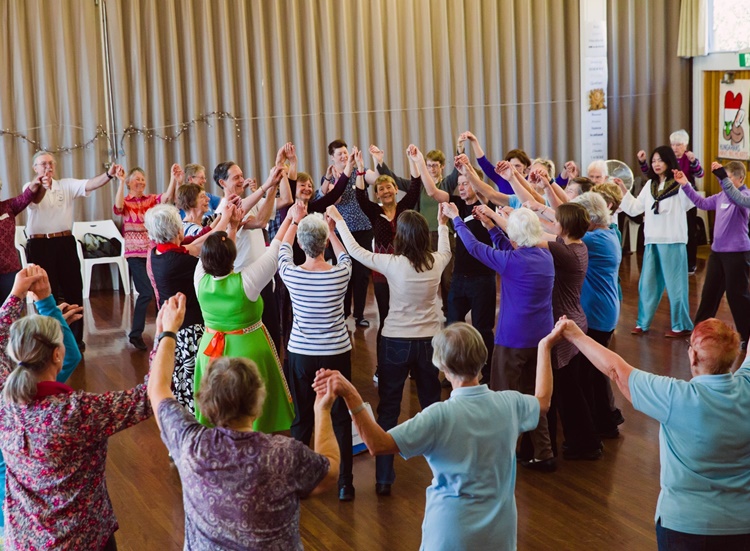
Dancing is associated with reduced risk of developing dementia. This might have something to do with all the cognitive reserve it builds. It could also be related to how dancing helps maintain heart health, which is linked to brain health.
Dance is also helpful to people who have dementia. This is because creativity and artistic skills are supported by wide brain areas. This makes them greatly resistant to brain damage. In fact, Dance Movement Therapy can delay cognitive deterioration and improve mood and social interaction in people with dementia. It also provides a valuable nonverbal method of communication.
Dancing is associated with reduced risk of developing dementia. This might have something to do with all the cognitive reserve it builds. It could also be related to how dancing helps maintain heart health, which is linked to brain health.
Dance is also helpful to people who have dementia. This is because creativity and artistic skills are supported by wide brain areas. This makes them greatly resistant to brain damage. In fact, Dance Movement Therapy can delay cognitive deterioration and improve mood and social interaction in people with dementia. It also provides a valuable nonverbal method of communication.
Read less...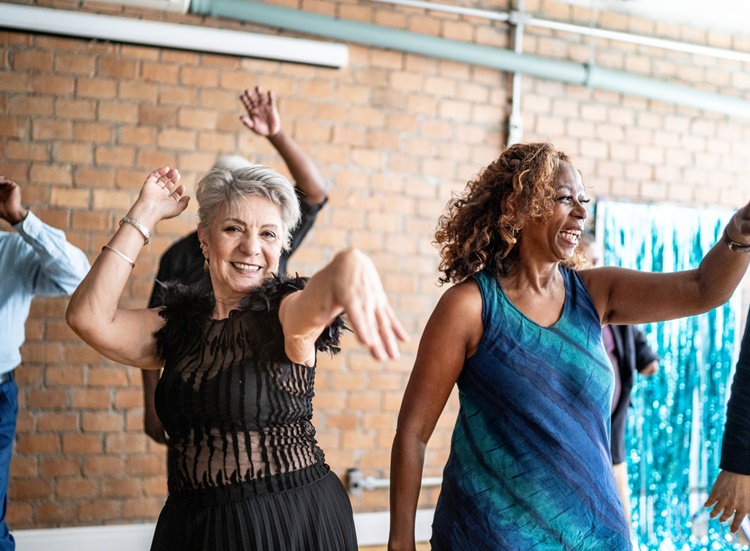
There are plenty of dance styles that can be appropriate for older people. If you are unsure about a style's suitability for you, ask your doctor. Otherwise, consider checking out classes in the following:
Or just take your friends to a live concert at a local bar and do some freestyle dancing. You should be able to find events and classes by looking online. Or you can check with your nearest community centre.
There are plenty of dance styles that can be appropriate for older people. If you are unsure about a style's suitability for you, ask your doctor. Otherwise, consider checking out classes in the following:
Or just take your friends to a live concert at a local bar and do some freestyle dancing. You should be able to find events and classes by looking online. Or you can check with your nearest community centre.
Read less...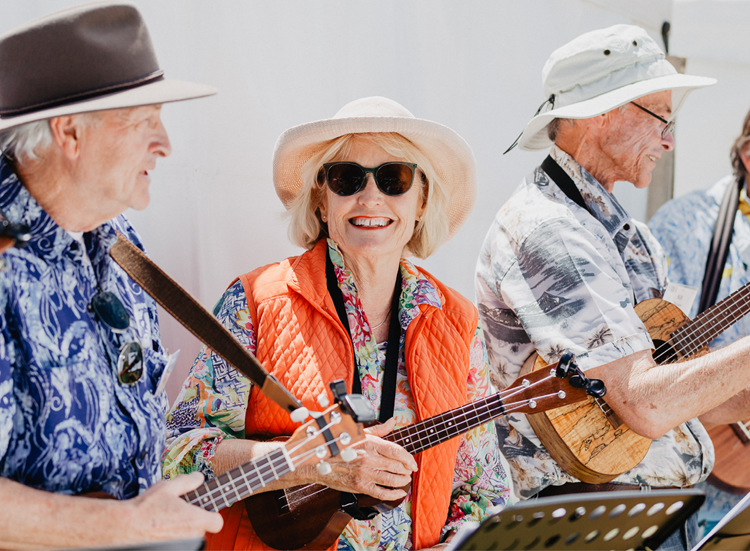
Or you might want to start by simply putting on your favourite music at home.
It would be best to do this with friends or family around. Impromptu dance parties can be great for bonding with toddler grandchildren.
You can gently move however the music makes you want to move. Maybe start with tapping your foot to the beat. Then develop this movement until you can sway to the tune with your whole body. Try singing along; that's good for you too.
Just remember, the way to get the most out of dancing is to enjoy yourself.
Or you might want to start by simply putting on your favourite music at home.
It would be best to do this with friends or family around. Impromptu dance parties can be great for bonding with toddler grandchildren.
You can gently move however the music makes you want to move. Maybe start with tapping your foot to the beat. Then develop this movement until you can sway to the tune with your whole body. Try singing along; that's good for you too.
Just remember, the way to get the most out of dancing is to enjoy yourself.
Read less....tmb-large%20card.png?sfvrsn=5e283553_4)
If you need more information, take the LiveUp quiz or get in touch with one of our helpful team on 1800 951 971.
If you need more information, take the LiveUp quiz or get in touch with one of our helpful team on 1800 951 971.
Alzheimer’s Association. (2014). Public health spotlight, Heart Health and Brain Health. Retrieved from https://www.alz.org/media/documents/spotlight-heart-brain-health.pdf
Dubey-Pathak, M. (2014). The Rock Art of the Bhimbetka Area in India. Retrieved from https://www.rockartscandinavia.com/images/articles/a14pathak.pdf
Groth, L. (2022, July 6). 9 reasons dancing is good for your health. Everyday Health. https://www.everydayhealth.com/workouts/9-reasons-dancing-is-good-for-your-health/
Karkou, V., & Meekums, B. (2017). Dance movement therapy for dementia. Cochrane Database of Systematic Reviews, 11, CD011022. https://doi.org/10.1002/14651858.CD011022.pub2
Kudlacek, S., Pietschmann, F., Bernecker, P., Resch, H., & Willvonseder, R. (1997). The impact of a senior dancing program on spinal and peripheral bone mass. American Journal of Physical Medicine & Rehabilitation, 76(6), 477-481. https://doi.org/10.1097/00002060-199711000-00009
Perlman, S. G., Connell, K. J., Clark, A., Robinson, M. S., Conlon, P., Gecht, M., Caldron, P., & Sinacore, J. M. (1990). Dance-based aerobic exercise for rheumatoid arthritis. Arthritis & Rheumatism, 3(1). https://doi.org/10.1002/art.1790030106
Porat, S., Goukasian, N., Hwang, K. S., Zanto, T., Do, T., Pierce, J., Joshi, S., Woo, E., & Apostolova, L. G. (2016). Dance experience and associations with cortical gray matter thickness in the aging population. Dementia and Geriatric Cognitive Disorders Extra, 6(3), 508-517. https://doi.org/10.1159/000449130
Powers, R. (2010, July 30). Use it or lose it: Dancing makes you smarter, longer. Stanford Dance. Retrieved from https://socialdance.stanford.edu/syllabi/smarter.htm
Somerville, C. (2021). How stress can stop immune cells in their tracks. University of Melbourne Newsroom.
Stellar, J. E., John-Henderson, N., Anderson, C. L., Gordon, A. M., McNeil, G. D., & Keltner, D. (2015). Positive affect and markers of inflammation: Discrete positive emotions predict lower levels of inflammatory cytokines. Emotion, 15(2), 129-133. https://doi.org/10.1037/emo0000033
Stern, Y. (2022, September). Cognitive reserve. Age UK. Retrieved June 18, 2024, from https://www.ageuk.org.uk/information-advice/health-wellbeing/mind-body/staying-sharp/thinking-skills-change-with-age/cognitive-reserve/#:~:text=%27Cognitive%20reserve%27%20is%20the%20idea,occur%20through%20ageing%20and%20disease.
Vander Elst, O. F., Foster, N. H. D., Vuust, P., Keller, P. E., & Kringelbach, M. L. (2023). The neuroscience of dance: A conceptual framework and systematic review. Neuroscience & Biobehavioral Reviews. Advance online publication. https://doi.org/10.1016/j.neubiorev.2023.105197
Verghese, J., Lipton, R. B., Katz, M. J., Hall, C. B., Derby, C. A., Kuslansky, G., Ambrose, A. F., Sliwinski, M., & Buschke, H. (2003). Leisure activities and the risk of dementia in the elderly. The New England Journal of Medicine, 348(25), 2508–2516. https://doi.org/10.1056/NEJMoa022252
Vrinceanu, T., Esmail, A., Berryman, N., Predovan, D., Vu, T. T. M., Villalpando, J. M., Pruessner, J. C., & Bherer, L. (2019). Dance your stress away: Comparing the effect of dance/movement training to aerobic exercise training on the cortisol awakening response in healthy older adults. Stress, 22(6), 687-695. https://doi.org/10.1080/10253890.2019.1617690
Wang, L., Guo, F., Zhao, C., Zhao, M., Zhao, C., Guo, J., Zhang, L., Zhang, L., Li, Z., & Zhu, W. (2023). The effect of aerobic dancing on physical fitness and cognitive function in older adults during the COVID-19 pandemic-a natural experiment. Sports Medicine and Health Science, 5(3), 196-204. https://doi.org/10.1016/j.smhs.2023.07.005
Wu, X., Lu, X., Zhang, H., Wang, X., Kong, Y., & Hu, L. (2023). The association between ballroom dance training and empathic concern: Behavioral and brain evidence. Human Brain Mapping, 44(2), 315-326. https://doi.org/10.1002/hbm.26042
Zaidel DW. (2010). Art and brain: insights from neuropsychology, biology and evolution. J Anat, 216(2), 177-183. doi: 10.1111/j.1469-7580.2009.01099.x. PMID: 19490399; PMCID: PMC2815940.
Take our easy OpenUp quiz to get personalised advice and see suggested products, services and support in your local area or online.
Let's go!